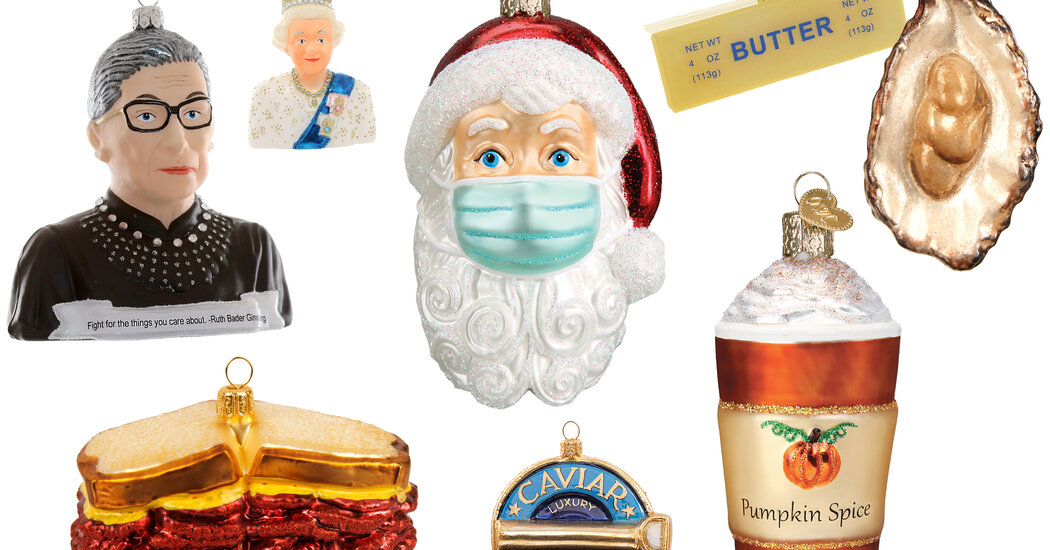American consumers’ spending on winter holidays including Christmas, Hanukkah and Kwanzaa has grown, rising from some $567.6 billion in 2012 to around $889.3 billion in 2021, according to data from the National Retail Federation, a trade group. Among the 93 percent of Americans that celebrate Christmas, according to a 2019 Gallup poll, a growing share focus on the Christian holiday’s nonreligious aspects, which include decorating trees.
Some ornaments, like a bowl of matzo ball soup ($16) and a menorah ($26), both made by Cody Foster & Co., seem particularly designed for broader appeal. Ben Weisman, 33, who is Jewish, received the menorah ornament as a present from his husband, Anthony Weisman, 36, a Protestant minister. For the couple, who live in Darien, Conn., shopping for ornaments has “become a way for us to come together around something that’s really important to Anthony for a faith reason, but is equally accessible for both of us,” said Ben Weisman, who works in finance.
“People are decorating in a more personal way,” said Cody Foster, who started his namesake décor company in 1999. He added that customers’ interest in his company’s kitschy ornaments took off during the coronavirus pandemic, when people were eager for cheery decorations. In 2018 and 2019, sales of its most popular style, a stick of butter ($16), totaled 20,000. Since 2020, sales of the ornament have totaled 90,000.
To produce his company’s glass ornaments, Mr. Foster works with a manufacturer in China that he declined to name. Cody Foster & Co. distributes its products to more than 6,000 retailers, including Paper Source and Nordstrom, which offer them at various prices. In 2013, Anthropologie and West Elm removed the company’s products from stores following allegations of design piracy. “It was a good learning experience for me,” Mr. Foster said. “Let’s try to not follow the trends, but as best we can try to start the trend.”
At Old World Christmas in Spokane, Wash., making new glass ornaments that reference a cultural moment — a Wordle grid ($25), a mitten-wearing Bernie Sanders sitting cross-legged ($28) — can take as long as a year.
Neal Applefeld, the company’s president and chief executive, said the process begins with brainstorming sessions in January and February, after which potential new styles are sketched. Manufacturing takes place at factories in China and Vietnam, where renderings are used to create handcarved clay molds and then steel molds, into which glass is blown. A silvering solution is poured into cooled glass ornaments to make them reflective, and they are then painted and decorated with glitter by hand.
Sumber: www.nytimes.com
